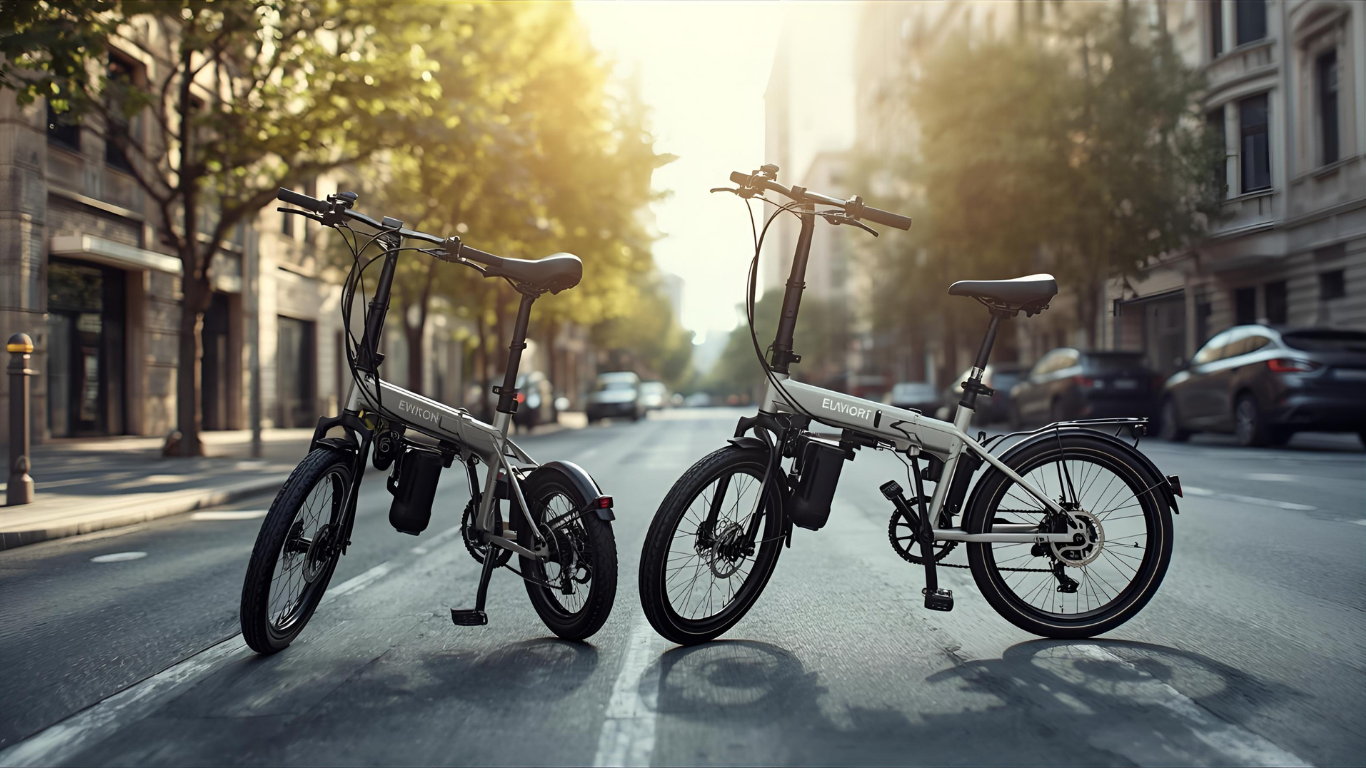Foldable vs Hybrid Ebikes in Singapore is a debate many urban commuters face today. As the city embraces cleaner and smarter mobility, riders are asking: should I go for the compact convenience of a foldable ebike or the power and versatility of a hybrid? In this guide, we’ll break down the key features, pros, and real-world commuting advantages of each option—so you can make the right choice for your daily ride.
Why Ebikes Are Transforming Singapore’s Commute
In recent years, ebikes Singapore have surged in popularity thanks to rising fuel prices, stricter COE regulations, and an increasing shift towards sustainable transport. Unlike traditional bicycles, ebikes provide an effortless riding experience, making them ideal for navigating Singapore’s dense traffic and humid climate. Two models stand out in the market—foldable ebikes and hybrid ebikes. Both have unique strengths that cater to different lifestyles, but the choice depends on your specific commuting needs.
1. Size and Portability
The biggest advantage of a foldable ebike is its compact size. Foldable ebikes are designed for riders who live in HDB flats, condos, or apartments with limited storage space. They can be easily folded and carried onto public transport such as MRTs and buses, aligning perfectly with Singapore’s “last-mile connectivity” goals.
On the other hand, hybrid ebikes are larger and sturdier. They don’t fold, but they offer a more comfortable ride with a bigger frame and larger wheels. If you have ample parking or storage, hybrids are a better choice for stability.
2. Riding Comfort and Stability
Hybrid ebikes usually come with larger 26-inch wheels compared to the 16- or 20-inch wheels found on foldable models. Larger wheels mean smoother handling, more stability over uneven terrain, and better shock absorption. For long-distance commuters, hybrids deliver a more comfortable ride—especially on Singapore’s park connectors or longer cross-island trips.
Foldables, while agile, may feel “twitchier” on bumpy roads. They’re better suited for short, urban commutes where maneuverability and convenience trump comfort.
3. Battery Life and Range
If range is your priority, hybrids typically win. Hybrid ebikes are built with larger battery packs, giving riders up to 120 km per charge depending on the model. This is particularly useful for delivery riders or commuters traveling from the heartlands into the CBD daily.
Foldable ebikes usually feature smaller batteries, offering 50–70 km per charge. While sufficient for most short commutes, frequent riders may find themselves charging more often.
4. Weight and Portability
A key consideration in the Foldable vs Hybrid Ebikes in Singapore debate is weight. Foldable models weigh between 18–22 kg, making them manageable for carrying up stairs, storing at home, or bringing on public transport. Hybrids, by contrast, can weigh 25–30 kg due to their larger frames and batteries.
If portability and convenience are critical—say, if you live on the 4th floor of a walk-up apartment—foldables are the smarter choice.
5. Price and Value for Money
Generally, foldable ebikes are slightly more affordable, with entry-level models starting around $1,200–$1,500. Hybrid ebikes, thanks to their larger batteries and frames, often start at $1,700 and can go beyond $2,500 depending on features.
But price isn’t everything. If you value portability, foldables offer excellent ROI. If you need range and comfort, hybrids justify their higher cost in the long run.
6. Use Case Scenarios
- Best for Foldable Ebikes: MRT/bus commuters, urban professionals, students, riders with limited home storage.
- Best for Hybrid Ebikes: Delivery riders, long-distance commuters, cycling enthusiasts who want stability and performance.
7. Safety and Regulations
Both foldable and hybrid electric bikes in Singapore must comply with LTA regulations, including UL2272 certification, a maximum weight of 20kg (for certain foldables), and a top speed of 25 km/h. When choosing, ensure your model is fully certified—this protects both your safety and legality on Singapore’s roads and park connectors.
Foldable vs Hybrid Ebikes in Singapore: Final Verdict
The choice between foldable vs hybrid ebikes in Singapore ultimately comes down to lifestyle. If you prioritize convenience, portability, and short city rides, a foldable electric bike is your best bet. If your focus is comfort, long-range capability, and performance, a hybrid electric bike will serve you better. At Gill Life, we stock a wide range of UL2272-certified electric bikes—both foldable and hybrid—so you can find the perfect fit for your commute.
No matter which you choose, both options represent a powerful step towards cleaner, greener, and more efficient transportation in Singapore.
Key Takeaways
- Foldable Electric bikes: Compact, portable, affordable, ideal for urban short commutes.
- Hybrid Electric bikes: Longer range, more stable, better comfort, ideal for delivery riders and long-distance commuters.
- Both Options: Eco-friendly, LTA-certified, and excellent alternatives to cars for Singapore’s urban landscape.
Meta Description (SEO):
🚴 Discover the ultimate comparison: Foldable vs Hybrid Electric bikes in Singapore. Learn which is best for your commute—battery, range, portability & comfort explained.




